Just two years ago it was only possible to fly from the UK to Georgia via Istanbul (Turkey) or Kiev (Ukraine). However in May 2017 a direct Georgian Airways route from Gatwick to Tbilisi was launched, and just a month later Wizz Air (the largest low-cost airline in Central and Eastern Europe) began offering direct flights between London Luton and Kutaisi – making the country instantly more accessible to Western tourists.
Georgian Airways advertise return flights to Tbilisi from €318 (£280) but we scored return flights to Kutaisi with Wizz Air for just €102 (£90) and then caught the Georgian Bus (which operate specifically for the flights coming in and out of Kutaisi Airport) to Tbilisi for an additional €6.95 (£6.14). That’s actually cheap enough to consider booking a long weekend break to Georgia’s capital city. Wizz Air run two flights weekly, so you can fly in on a Wednesday evening and fly home on a Sunday afternoon.
Having recently spent 10 days in Georgia, I’d definitely recommend sticking around for longer. But if you don’t have longer then two or three days in Tbilisi will give you a good introduction to this fascinating country. Read on to discover my recommendations for things to do in Tbilisi if you have a couple of days to explore the city.
About Tbilisi
Founded in the 5th century, Georgia’s ancient capital spreads out on both sides of the Mtkvari River and is surrounded by mountains on three sides. It gets its name from the Old Georgian word, T′bilisi – meaning “warm location” – as a result of the numerous sulphuric hot springs found here.
Situated at the crossroads between Europe and Asia (even now it depends upon which source you acknowledge as to which continent Georgia is considered part of), and within close proximity of the lucrative Silk Road, the city grew at a steady pace and has long been home to people of multiple cultural, ethnic, and religious backgrounds. However its favourable trade location also meant that Tbilisi was the object of rivalry between the region’s powers. The city has, over time, been ruled by Persians, Arabs, Seljuk Turks, Mongols, Iranians, and Russians. Georgia gained independence from Russia in 1918 – 100 years ago.
As a result you’ll find a myriad of architectural styles in a city that’s also culturally diverse (currently Tbilisi is home to over 100 different ethnic groups), and therein lies a huge chunk of Tbilisi’s appeal.
CNN chose Tbilisi as one of their 7 design-savvy cities to watch in 2018, The Guardian recognises the recent boom of creativity in the city in this article, and in their most recent Best in Travel publication, Lonely Planet ranked Georgia as one of their top 10 countries to visit in 2018.
It seems that this year – 100 years after the country declared its independence from Russia – is Tbilisi’s year to shine.
Two days in Tbilisi: what should I see and do?
Obviously the answer to this question is subjective, and depends entirely on what sort of thing interests you and what you like doing. But these were a few of my favourite things to do in Tbilisi:
#1 Marvel at the Crocked Clock Tower
Let’s start with one of the most iconic sights in the Old Town. Built by puppet master Rezo Gabriadze during a renovation of his adjacent theatre (which, incidentally, was constructed over a timespan of thirty years, reusing old pieces from abandoned structures in Tbilisi), the clock tower took four years to build and was finally unveiled in 2010. Part Steampunk, part fairytale in design, Gabriadze is said to have used the structure as an impressive statement against the soulless urban modernisation that we see in countless cities around the world.
Good to know: If you turn up on the hour, you’ll see an angel appearing from behind the doors on the little balcony at the top, carrying a small hammer which she uses to strike the bell several times.
#2 Visit Anchiskhati Basilica – Tbilisi’s oldest church
Built by King Gorgasali’s son Dachi in the 6th century, Anchiskhati Basilica is Tbilisi’s oldest surviving church. It’s named after the icon of Ancha, which was brought to Tbilisi in the 17th century, and now resides in the city’s Fine Arts Museum.
Although the structure was rebuilt on several occasions between the 15th and 17th century (due to wars between Georgia and the Persians and Turks), its three-nave design, yellow tuff-stone walls, and faded frescoes indicate the antiquity of its original construction.
Good to know: Unfortunately no photographs are allowed inside the basilica. Ladies, you’ll need to cover your heads; you’ll find a box containing flimsy head scarves of varying colours and designs situated just inside the doorway.
#3 Stop by Sioni Cathedral
In the same sort of area as the Crooked Clock Tower and Anchiskhati Basilica is The Sioni Cathedral. Originally built in the 6th and 7th centuries, the cathedral has been destroyed and rebuilt many times since then, so the majority of what you see today dates from the 13th century.
Sioni Cathedral is of particular importance to Georgians, because it’s home to the sacred cross of St. Nino, which – according to legend – is made from vine branches entwined with strands of the saint’s own hair.
Good to know: Don’t make the same mistake we did and skip the interior. Since returning from Georgia I’ve found photos of the inside of this cathedral online, and it looks stunning!
#4 Photograph the Jumah Mosque
Tbilisi was historically a major centre of trade between the Islamic world and northern Europe, which is one of the reasons it’s long been a crossroads for many different faiths to convene. As an example of this, you’ll find the Jumah Mosque amid the sulfur baths of the city’s ancient Abanotubani district, down the road from both a church and synagogue.
Although Georgia’s population now is largely Orthodox Christian (83.4%), around 10% identify as Muslim. Until 1951 there were two mosques in Tbilisi: Sunni Muslims worshipped at the Jumah Mosque and Shia Muslims worshipped at the Blue Mosque. Traditionally these two sects have always worshipped separately, however when the Communist government demolished the Blue Mosque to make way for a bridge, the Sunni Muslims recognised that the Shia Muslims had nowhere to go and subsequently welcomed them into their mosque.
Nowadays the Jumah Mosque is one of the only mosques in the world where the two sects worship side by side.
Good to know: The mosque is located next to the Orbeliani bathhouse, whose beautiful tile mosaic facade makes it an attraction in its own right.
#5 Cross the Peace Bridge
Linking Tbilisi’s Old Town with the Avlabari neighbourhood, the avant-garde glass and steel footbridge over the Mtkvari was designed by Italian Michele De Lucchi, and opened in 2010. Some love it, some hate it, but whatever your views are there’s no doubt that Peace Bridge an eye-catching, instantly recognisable dot on the landscape of central Tbilisi.
Good to know: Return after dark to see the bridge beautifully illuminated.
#6 Relax in Rike Park
When you cross the Peace Bridge from Tbilisi’s Old Town, you’ll arrive into Rike Park. Pathways lined with flowers weave their way amidst pools and fountains, making this a popular spot for students, families and tourists to hang out and to escape the buzz of city life.
The large metallic tube-like structures at the park’s north end are the Concert Hall and Exhibition Centre. These were designed by Italian architects Massimiliano and Doriana Fuksas, built for a total cost of £40,000,000, and scheduled to open in late 2017, once work on the interior is complete.
Good to know: The cable car up to Narikala Fortress leaves from here. You’ll need a metromoney card to ride it, which you can buy at the cable car station.
#7 Catch the cable car up to Narikala Fortress
My advice would be to get the cable car up to the fortress (primarily for the views that it affords), and then walk back down, via the Jumah Mosque and domed-roofed bathhouses.
The Narikala Fortress dates back to the 4th century, when it was a Persian citadel, and was subsequently expanded considerably by the Arabs in the 7th and 8th centuries. Most of the existing fortifications, however, date from the 16th and 17th centuries.
And if you’re wondering why there’s a very new-looking church up here on the site of an ancient monument, it’s because the original structure, which dates from the 13th century, was almost completely destroyed by fire. St. Nicholas Church was rebuilt as recently as 1996-97.
Don’t forget to stop by the Botanical Garden while you’re up here, and also to check out the Dzveli Waterfall – hidden away right in the centre of Old Tbilisi.
Good to know: Entrance to the fortress is free. Wear some sensible footwear and suitable clothing for hiking, as you’ll need to scramble/climb up to some of the best viewpoints.
#8 Check out Metekhi Church
You can’t miss Metekhi Church, standing proud on a rocky outcrop above the Metekhi Bridge, on the opposite side of the river to Tbilisi’s Old Town. King Vakhtang Gorgasali made Tbilisi his capital in the 5th century, and this is where he built his palace, along with the site’s first church (since destroyed by Mongols in 1235).
Quite appropriately the present church (which was built between 1278 and 1289, and reconstructed several times since) is guarded by the 1960s equestrian statue of the King himself.
Good to know: If you want to look inside the church, ladies you’ll need to be wearing a skirt that covers your knees. I’d only packed trousers and got turned away at the entrance.
#9 Hang out at Fabrika
Located on the eastern side of the Mtkvari River approximately 2.6 kilometres from Tbilisi’s Old Town, Fabrika is an old soviet sewing factory that’s been converted into a multi-functional urban space. You’ll find a boutique hostel here and a co-working space, as well as art studios, shops, cafés, bars and restaurants.
A great place to hang out for a few hours, and grab some food and a couple of drinks before hopping on the metro back to central Tbilisi.
Good to know: If you’re a fan of cactii, check out the plant emporium at one end of the courtyard, and if you’re a cat lover, the pottery studio opposite Moulin Electrique has its own resident feline (as well as lots of beautiful pottery pieces too!)
#10 Have a browse in the Meidan Bazaar
You’ll find Meidan Bazaar underneath Meidan Square in the heart of Tbilisi’s Old Town. Not only does this underground tunnel make a welcome escape from the stifling heat of Tbilisi’s streets, it’s also home to thousands of Georgian-made souvenirs – from wine to hand crafted socks, and from postcards to Georgian jams, sauces, spices and tea.
Good to know: Meidan Bazaar is open from 10:00-22:00 hours.
#11 Shop for Soviet memorabilia, art and antiques at the Dry Bridge Market
This extraordinary flea market will keep you entertained for hours. So-named because of its location at either side of and along the streets surrounding Tbilisi’s Dry Bridge, the city’s Dry Bridge Market sells everything from Soviet memorabilia to jewellery, musical instruments, painted rocks, and a huge array of quality artwork and paintings.
Good to know: Because the market is not covered, whether it’s open or how much of it is open is very dependent upon the weather. If you can, time your visit in conjunction with a dry day.
#12 Book a table at Café Littera
If you can afford to splash out on a single meal in Tbilisi, make it one at Cafe Littera. This is not a restaurant you’ll stumble upon; it’s hidden away in the lovely leafy rear garden of the Georgian Writers’ Union building (although it’s accessed through an entirely different entrance). Café Littera serves up what they describe as ‘nouveau Georgian’ cuisine – which is essentially traditional Georgian fare with a modern twist.
We loved the atmospheric location and the food and wine were spot on. We ordered a selection of dips (smoked eggplant pkhali with pomegranate, pumpkin pkhali with walnuts and red adjuka, and homemade nadugi with red adjuka and mint, all served with lavash – the local flatbread), seared scallops on Sheela-pilaf with Georgian truffle sauce (me) and slow roast pork belly on stir-fried bok choi with ginger (Stu).
Good to know: If you’re planning on visiting at the weekend, it’s a good idea to book a table. We were lucky that we turned up at exactly the right time to snag the last available table for two.
#13 Sample some craft ales at 9 MTA
Reminiscent of Brew Dog back in the UK (which, incidentally I’m a huge fan of), this bar was located just a few doors down from our apartment, so we always kind of fell in there on route home every night. They’ve got a list of craft ales as long as your arm (probably much longer), served either on draught or by the bottle, and staff are happy to let you sample a few before you order.
9 MTA is not the kind of establishment I expected to find in Tbilisi, but was a very welcome one all the same and is one of only a few Georgian enterprises manufacturing genuine craft beer.
#14 Make friends with a few furry felines
Like both Istanbul and Chefchaouen, Tbilisi seems to have a huge population of street cats. Some look like they’ve seen better days but most of them appear really well looked after. And quite a few of them are willing to pose for photographs.
#15 Get lost in the ancient streets of Old Tbilisi
Getting lost in Old Tbilisi is actually a whole lot easier than you may think. Like Granada’s Albayzín, Old Tbilisi’s tangle of ancient streets are located on the slopes of a hillside, making navigation more than a little confusing! I left Stu late one afternoon, in order to return to the location of the bathhouses to photograph them in a better light; an hour later I was still wandering the streets of Old Tbilisi attempting to find them! The problem is that on a map it appears as though you’re heading in the right direction, but then the street heads uphill instead of down.
The upside to this was that I discovered places and viewpoints that I would otherwise probably have never found. The photograph below was shot from one of the loveliest viewpoints in Tbilisi, and one that I discovered completely by accident. It was such a pretty, serene spot from which to watch the last few rays of golden light illuminating the rooftops on the horizon.
I also found these wonderfully dilapidated and beautifully detailed old buildings.
And this incredible mirrored door.
#16 Have a look inside a few of Tbilisi’s many art galleries
As you wander through Old Tbilisi you’ll find an abundance of art galleries to have a nosey in, often with inviting exteriors that are as delightful to photograph as the art itself. I love buying art when I travel and have a house full of paintings from various different corners of the globe.
#17 Stroll through bustling Freedom Square
Often considered to be the centre of Tbilisi, Freedom Square is a busy, upscale thoroughfare where Rustaveli Avenue meets Tbilisi’s Old town. You’ll likely find yourself passing through at some point during your stay as it’s where you’ll find one of the city’s busiest metro stations, and also where buses pick up/drop off from.
It’s also home to the striking golden statue of St. George.
#18 Shop for carpets
Ok, this may sound like a strange item to have on this list, and I don’t mean for you actually to buy a carpet (because how the hell are you going to get that home in your backpack??), but these are works of art and definitely worthy of a closer inspection.
It’s scenes like these that immediately took me straight back to the streets of Istanbul.
Good to know: You can also buy woven bags and items of clothing, which are a little more portable.
#19 Find the Konka
No, I haven’t spelt the word “conker” (seed of the horse chestnut tree) wrong; a Konka is a horse-drawn tram, and was the first form of public transport introduced to Tbilisi residents in 1883. The open carriage could carry up to 20 passengers, and you’ll find one just up the road from Sioni Cathedral that’s now been converted into a quirky little cafe.
What should I eat and drink in Tbilisi?
There is a lot more to Georgian cuisine than bread and cheese (although an abundance of both is readily available). Here are a few of the foods I’d recommend that you try:
- Nigzviani Badrijani. Slices of fried aubergine served with a walnut and garlic paste. Makes a lovely starter or snack; the nicest we ate were at the restaurant beside the tourist information office in Signaghi.
- Lobio. Bean soup cooked in a clay pot with herbs and spices and served with fresh coriander. Even my meat-eating boyfriend absolutely adored this wholly vegetarian dish. Available everywhere and equally delicious everywhere we tried it.
- Mkhali and Pkhali. These are pastes combining vegetables (usually aubergine, pumpkin or spinach) with walnut, garlic and herbs. They’re often served with lavash – the local unleavened flatbread. The best we ate was at Café Littera in Tbilisi.
- Khachapuri. Essentially a cheese pie, Khachapuri come in a number of different regional varieties. The one we tried was a Khachapuri Acharuli, where the dough is formed into a gondola shape and filled with melted Sulguni and Imeretian cheese, egg, and butter. This is definitely a dish for sharing, and whilst they come in small, medium and large sizes, if there’s only two of you a small one is more than big enough; we couldn’t finish much more than half of our medium-sized one.
- Georgian Salad. Simple but delicious, a Georgian salad is traditionally made with tomatoes, fresh parsley, purple basil, green peppers, red onion and cucumbers. Cheese (Georgian Imeritian) or walnuts can also be added. I had a lovely version at Moulin Electrique in Tbilisi.
- Khinkali. Big spicy dumplings that are similar to Chinese Soup Dumplings (Xiao Long Bao), and are either stuffed with meat, mushrooms or cheese.
- Churchkhela. The Georgian snack you’ll see hanging up on street stalls throughout the country. It looks like some kind of cured sausage but is actually completely vegetarian, and is made from nuts (usually walnuts) coated in a mixture of grape juice and flour. I must admit, they weren’t my favourite but they make a great, high energy, low-cost snack to take with you on long hikes and bus journeys.
- Georgian wine (ghvino). Before I started researching travel to Georgia, I didn’t realise Georgian wine was a thing. But Georgian wine is a BIG thing. Did you know that wine has been made here for 8000 years? Or that 500 of the world’s 2000 grape varieties are Georgian? Georgia is particularly famous for qvevri wines – also called ‘unfiltered wine’ because it contains little or no additives, such as yeast, sugar or sulphur.
Where should I stay in Tbilisi?
The centre of Tbilisi is split up into five different neighbourhoods:
- Abanotubani. This area spreads from the banks of the Mtkvari River up the steep slopes to Narikala Fortress and along to Freedom Square. It’s where you’ll find the majority of the city’s notable historic sites, as well as its famous bathhouses. It’s definitely the most atmospheric of Tbilisi’s neighbourhoods with accommodation prices to match (although this is all relative; Tbilisi is cheap by Western standards).
- Avlabari. Home to Metekhi Church and Holy Trinity Cathedral, historically this area was inhabited by Armenians and is one of the oldest parts of the capital. It’s on the opposite side of the Mtkvari River to Abanotubani, but is still within easy walking distance of the Old Town.
- Mtatsminda. One of the largest of Tbilisi’s neighbourhoods, Mtatsminda is where the modern Georgian capital was originally created. It’s located north of Freedom Square, and incorporates Rustaveli Avenue, where much of the city’s accommodation can be found.
- Vera. This is one of the greenest neighbourhoods in Tbilisi, nestled on a hillside overlooking the city. The most important landmarks here are the architecturally notable buildings that have remained almost untouched from the 19th century and are more or less well preserved.
- Marjanishvili. Although this area is a bit of a walk from Tbilisi’s Old Town (just under three kilometres), pedestrianised Aghmashenebeli Avenue has been newly renovated and is home to some beautiful examples of architecture in the city. Marjanishvili is also where you’ll find the Fabrika complex – another reason why the area is becoming increasingly popular with tourists.
We stayed on an attractive pedestrianised street just off Freedom Square (at the confluence of the Abanotubani and Mtatsminda neighbourhoods) and I can honestly say we couldn’t have been better placed for exploring the city. We were just minutes from a metro station, and we had cafes and restaurants literally on our doorstep, but because our apartment was located in a courtyard off Galaktion Tabidze it was also quiet when we did want to go to sleep at night.
Our host was also amazing and relaxed his normal check-in rules so that we could get into the apartment as soon as we arrived in Tbilisi in the early hours of the morning.
We paid just over £90 for a three night stay here. If you’ve not yet joined Airbnb, you can get £25 of free credit by registering using this link.
Alternatively, booking.com offer a wide range of apartments too. We almost ended up staying at Two Doors Apartment on Rustaveli Avenue (which we booked with free cancellation through booking.com) but we decided we wanted to be closer to Freedom Square and Tbilisi’s Old Town.
[box type=”info” style=”rounded”]If you want £15 off your next stay, book using this link.[/box]
Any money-saving tips for Tbilisi?
Get yourself a metromoney card. They’re sold for 2 GEL at metro-station ticket offices (although we bought ours at the cable car station in Rike Park), are essential for riding the metro, and are also good for Tbilisi city buses and marshrutky (minibuses). You pay a flat rate of 0.50 GEL per metro or bus ride; any additional rides within one and a half hours of initially entering the metro station or boarding the bus are completely free of charge.
We also found that apartment rentals represent much better value for money than hotels or hostels in Tbilisi, so my advice would be to head over to Airbnb and start saving a few to your wish list in preparation.
What should I know before arriving?
- Visas. Citizens of more than 90 countries and territories, listed at www.geoconsul.gov.ge, can enter Georgia without a visa for stays of up to one year. If you need a visa you can obtain a short-stay one (for up to 30 days) by applying online here.
- Money. The currency in Georgia is Georgian Lari (GEL). ATMs are widely available.
- Language. Georgian is the national language, although a lot of Georgians can also speak a limited amount of Russian. English is widely spoken on the whole, but you may struggle in small guest houses, particularly in western Georgia. Taxi and bus drivers also speak very little English.
- Transport. The easiest and cheapest way to get to and from the airports in both Kutaisi and Tbilisi is to hop on a Georgian Bus. The buses operate specifically for the flights coming in and out of these airports; you can purchase tickets in advance on their website. In terms of travelling around the country, marshrutky (singular: marshrutka) are local minibuses and are the main form of transport around Georgia. Although they don’t always stick to the advertised timetables (sometimes they’ll leave early if full or later than scheduled if there are empty seats), they are generally reliable and fares are very cheap.
- Accommodation costs. We paid £93.16 for an apartment for three nights in Tbilisi. That’s just over £15 per person per night. Whilst you’ll find cheaper deals outside the capital city, this is the best value (location/style/quality versus price) option we found in Tbilisi.
Day trips from Tbilisi
We took a day trip to Davit Gareja but if you’re basing yourself in Tbilisi there are many more places you can visit, either by public transport or by booking a tour.
Viator is my go-to site for booking tours. Their guides they use are friendly, professional and knowledgeable and the trips I’ve been on have always been well organised with a good mix of sights included. You can view a whole host of day trips and tours from Tbilisi by following this link.
Further reading
As well as travel blogs (obviously!), I used the latest Lonely Planet guide to Georgia to plan my trip. However I’ve since discovered that Bradt have published one specifically on Georgia (Lonely Planet’s also includes Armenia and Azerbaijan).
If you’re interested to learn more about Georgian cuisine, or you’d like to recreate some of your favourite dishes at home when you return, this book is one of the best I’ve found. It contains a bit of history about the foods of Georgia, and all the recipes are accompanied by some beautiful photography to boot.
If you like this article, please share it on social media using the share buttons at the top of the post. And if you’d like to save it for reading later, why not pin to one of your Pinterest boards? Alternatively you can follow along on Facebook, Twitter, or Google+ or you can look me up on Instagram or Pinterest too!
**Some of the links in this post are affiliate links. All this means is that if you make a purchase through one of the links I have provided, I will earn a small commission as a result but the cost to you will remain exactly the same**


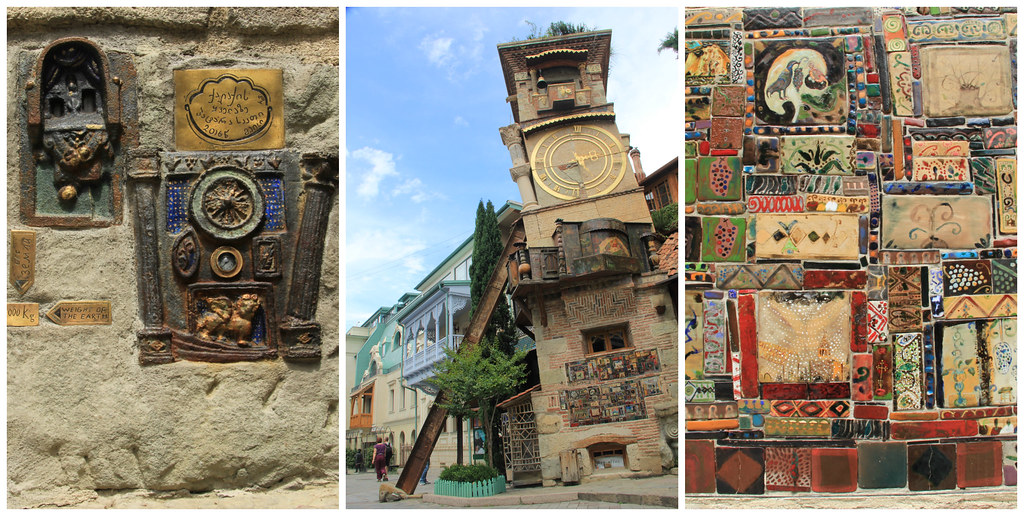



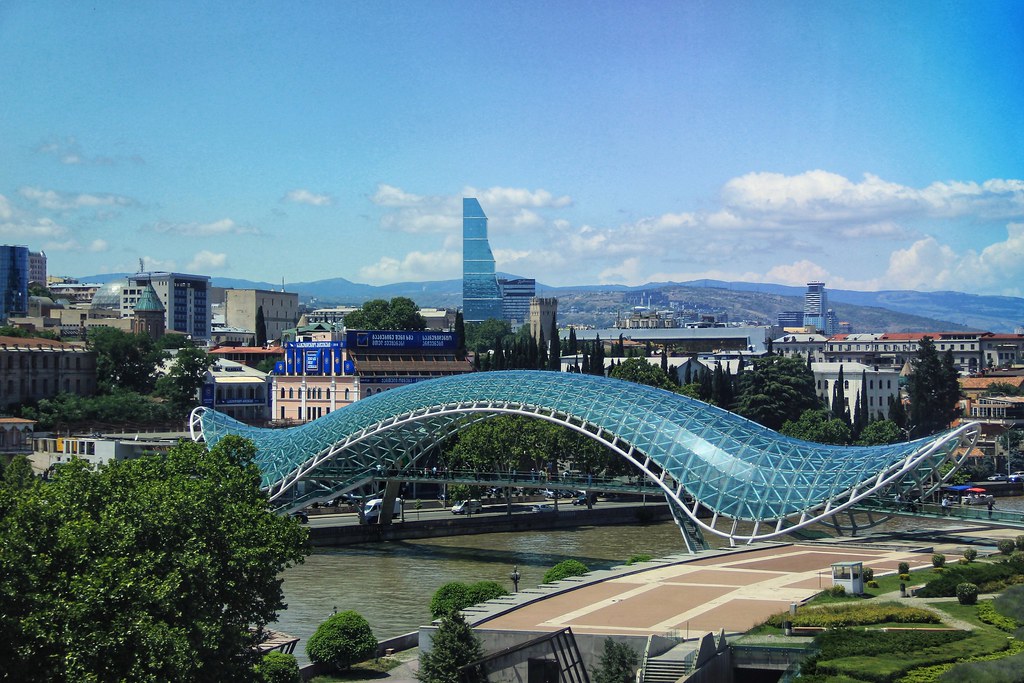

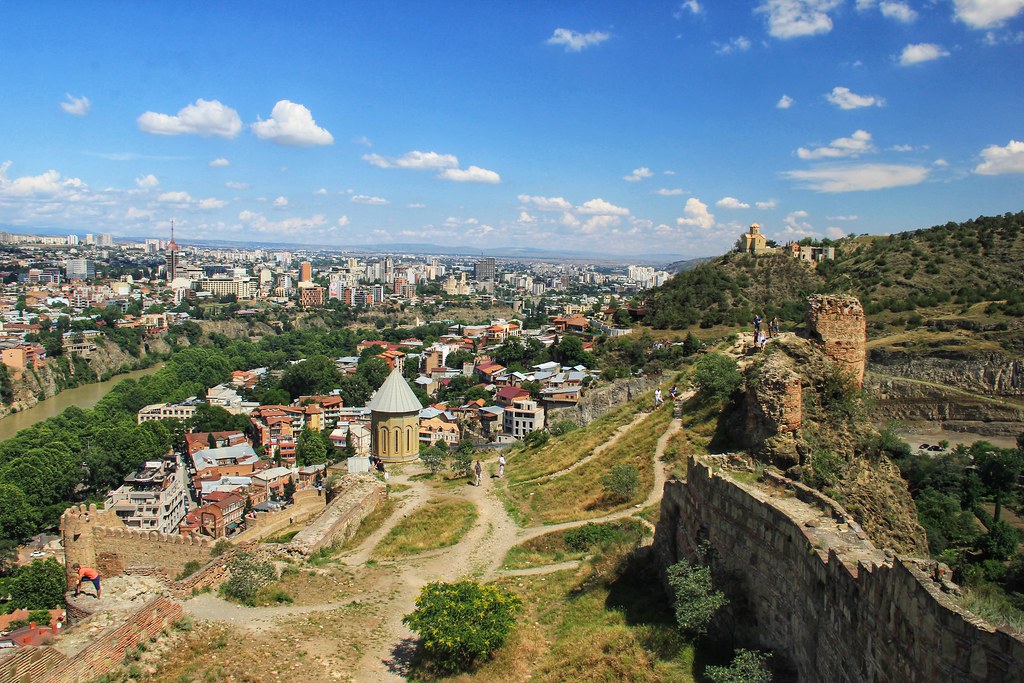


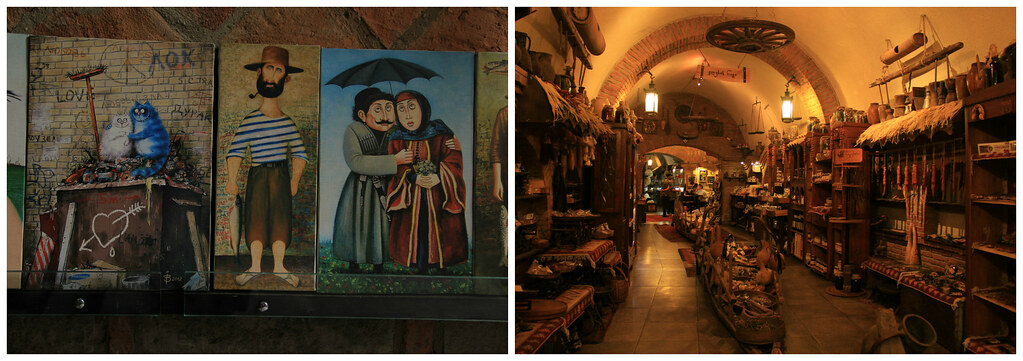


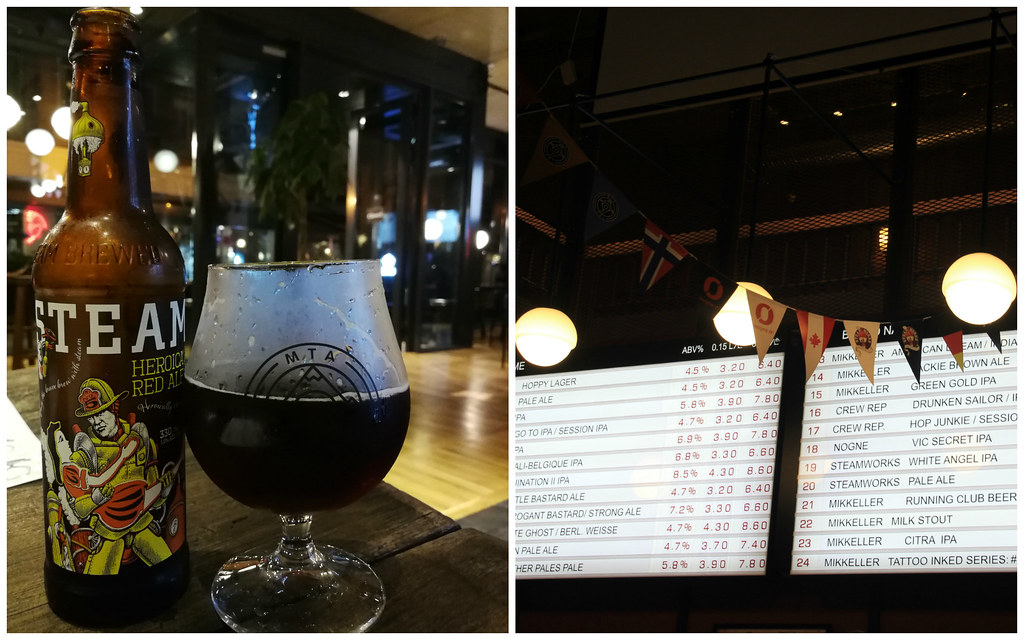
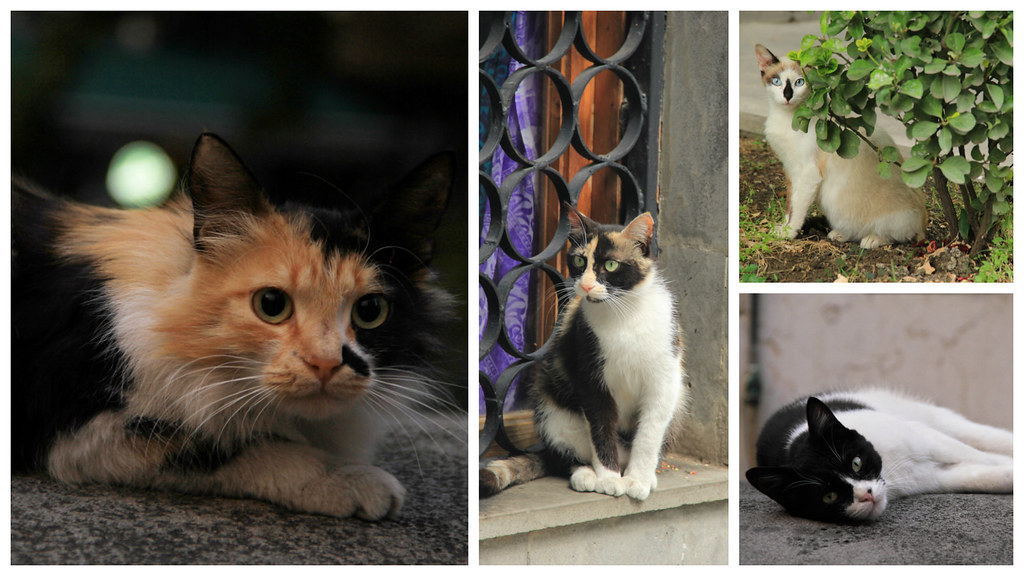

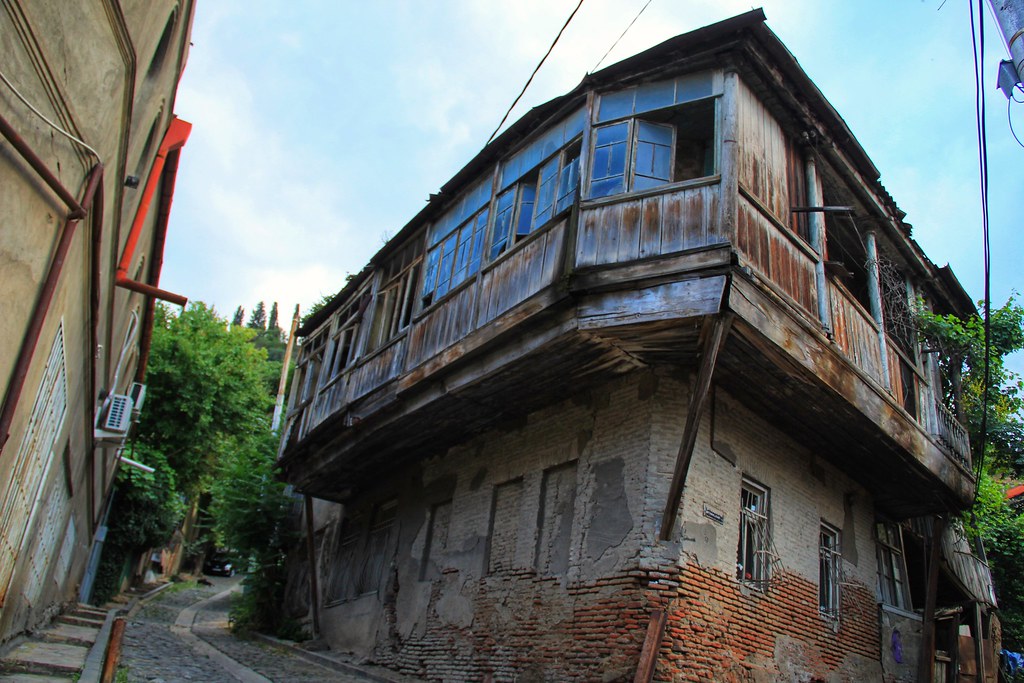
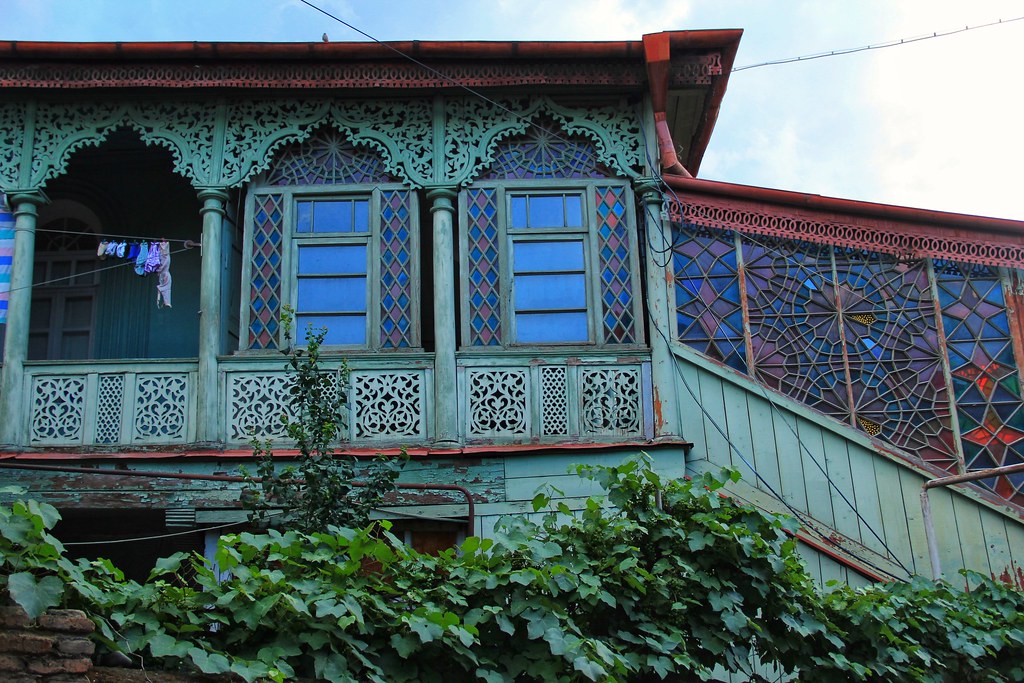




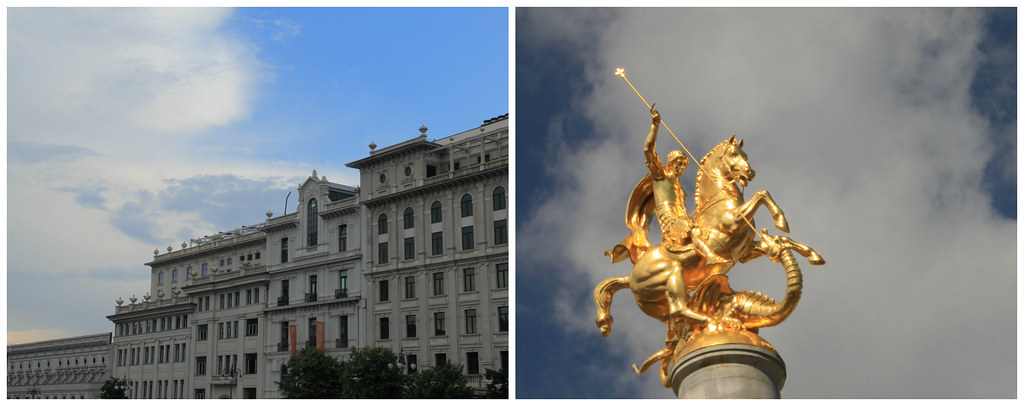
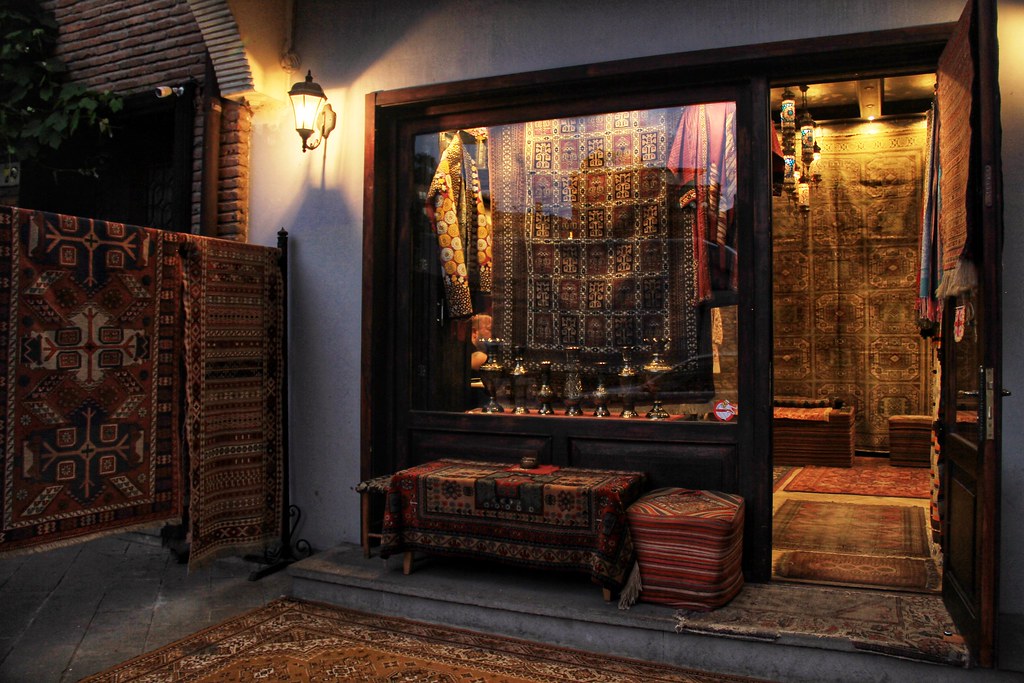


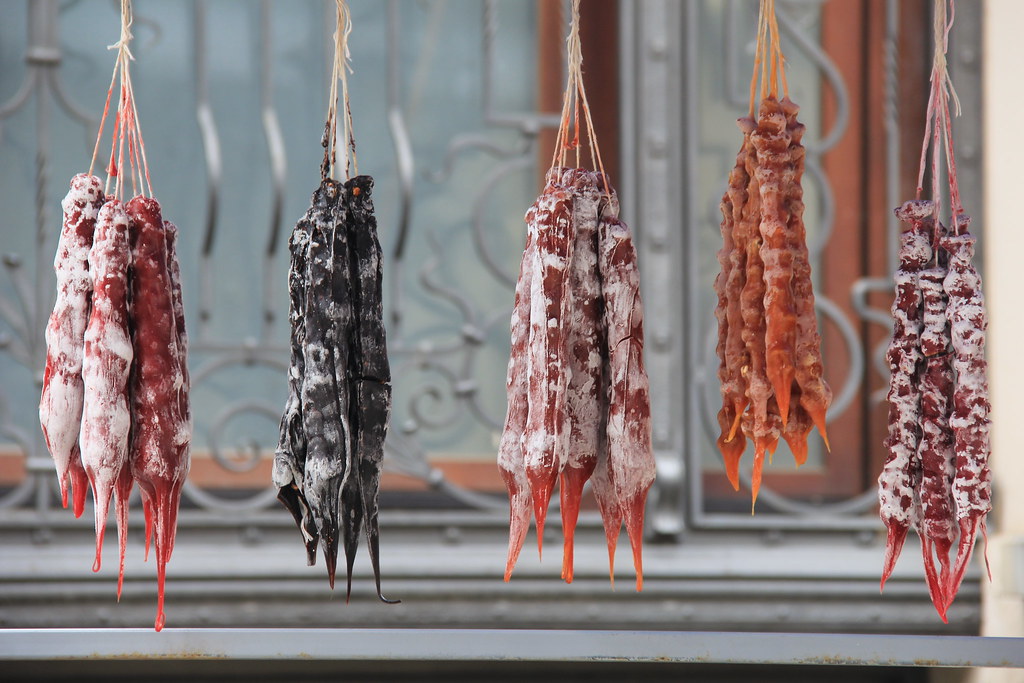
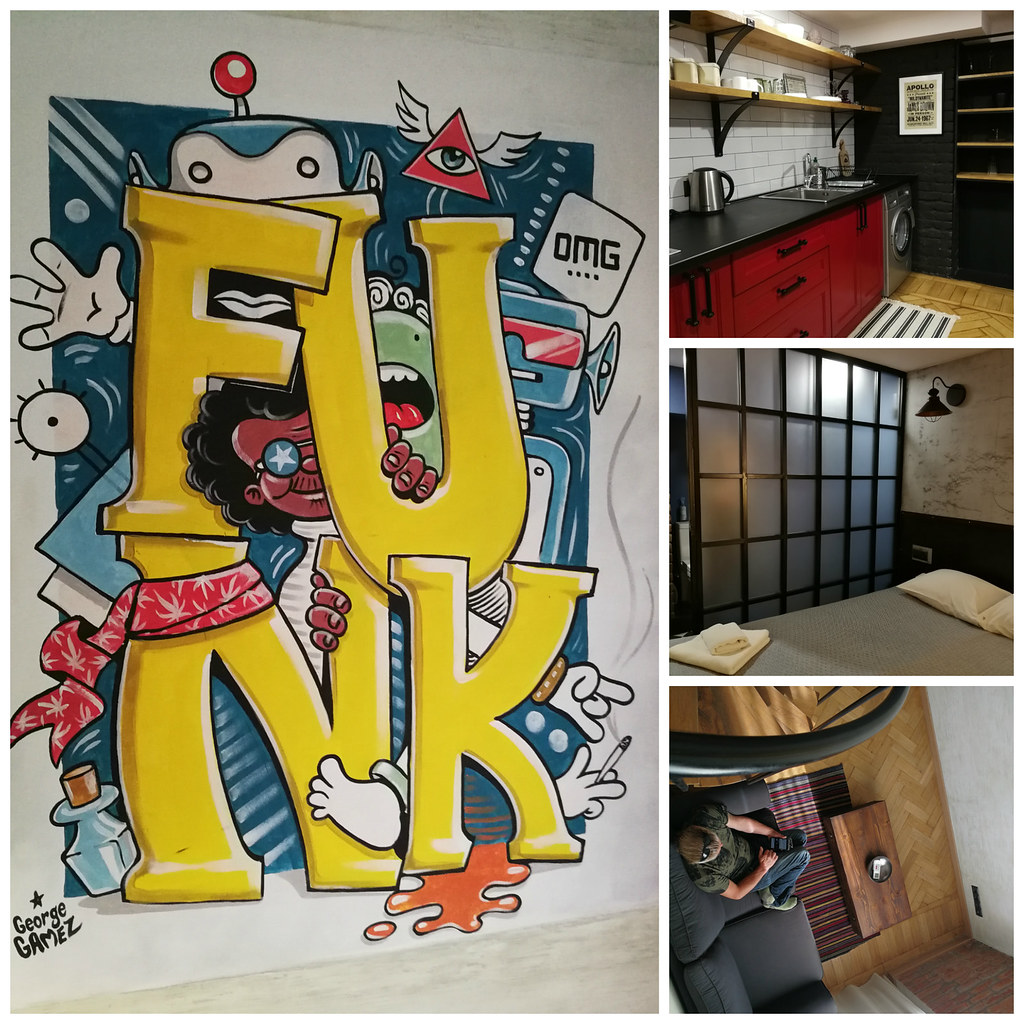
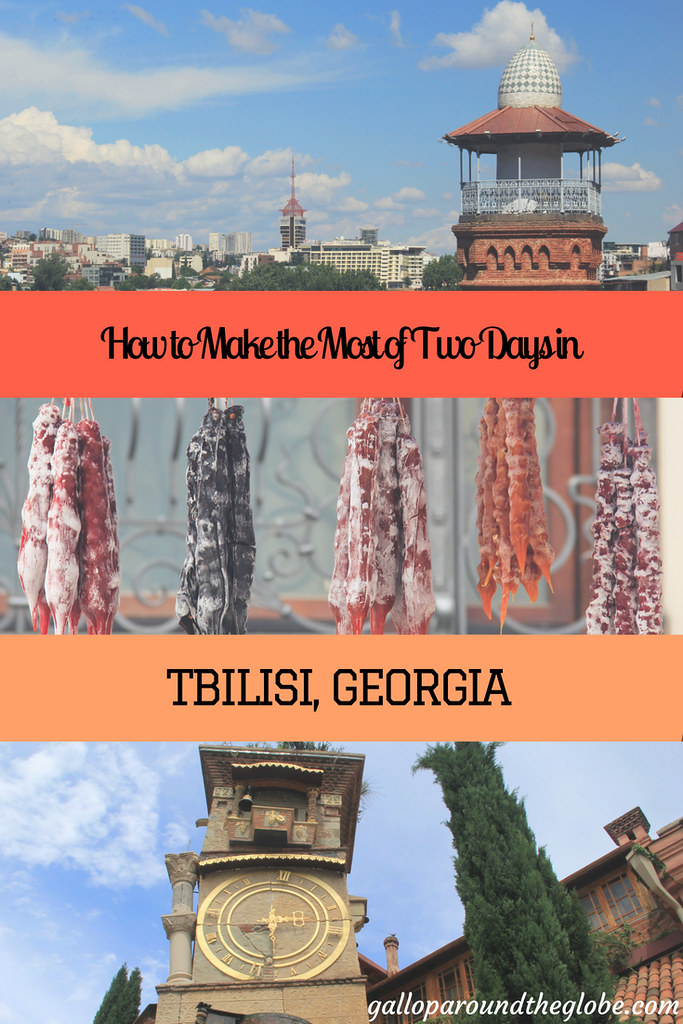
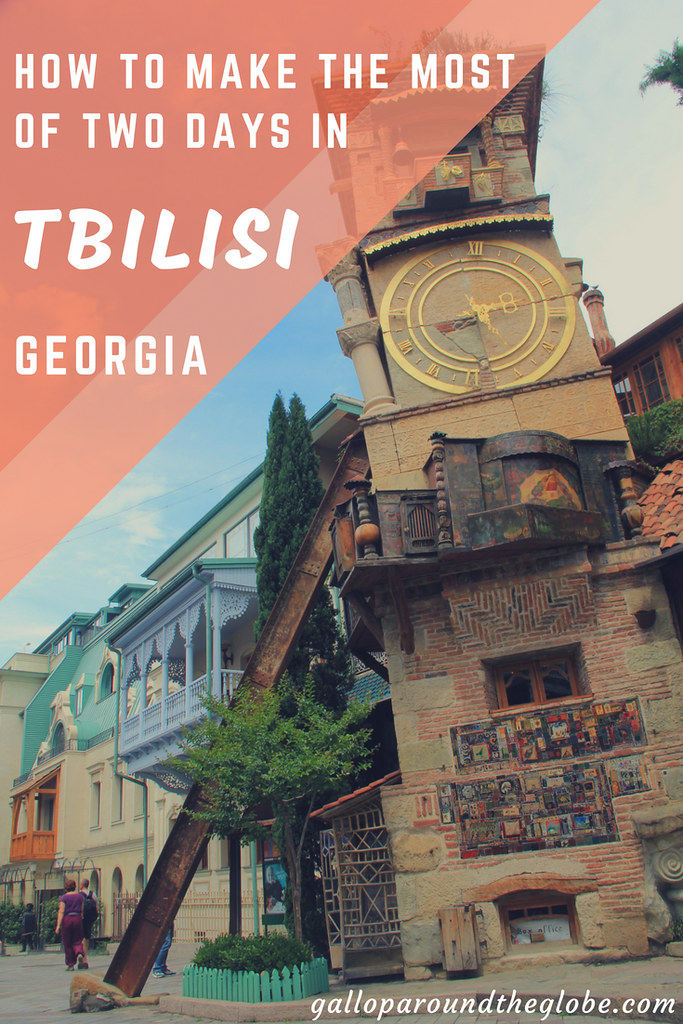
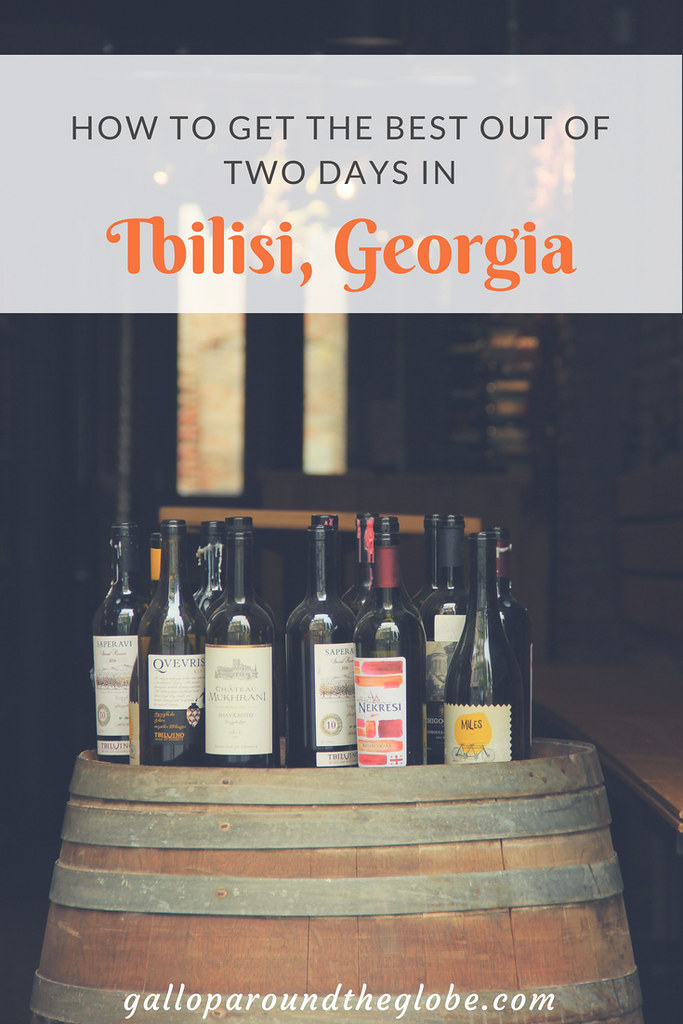





No Comments